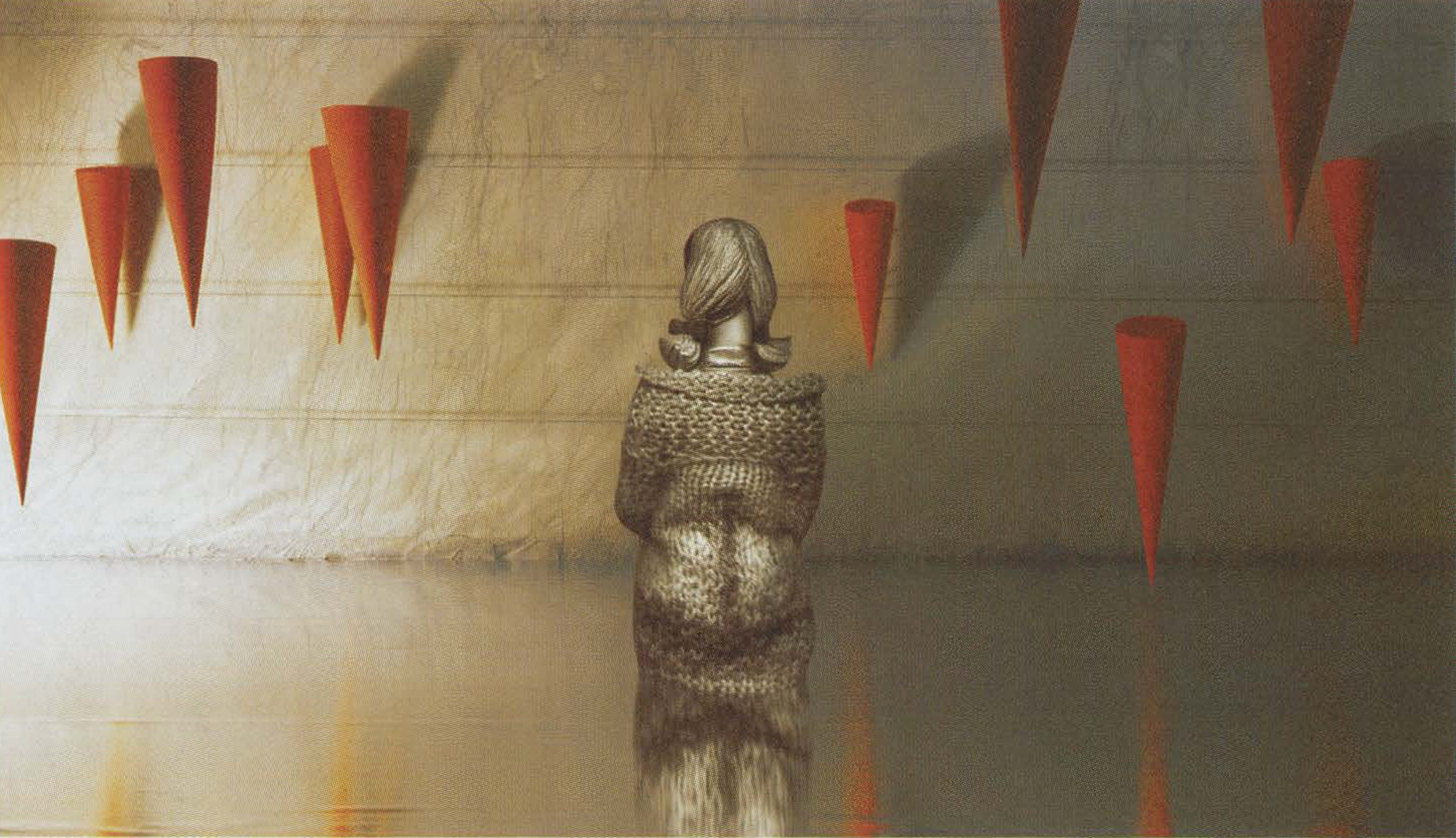Davida Kidd: God Save Us from Intoxicating Glances
Artist(s):
Title:
- God Save Us from Intoxicating Glances
Exhibition:
Medium:
- Digitally composited photograph
Size:
- 20" x 35"
Category:
Artist Statement:
Cyberspace, particularly amongst teenage girls, has become the 21st-century bully’s playground. The opportunity for anonymity has escalated the mean and hateful role-playing that teens would normally do off line.
The characters I create appear to be dredged up from the darker recesses of the subconscious. However, I try to render them from the point of view of compassion. They consist of composites of human parts found and made, my own photography, constructed sets, drawing, bits from my memory and an eclectic collection of ephemera. I have invented subtle character “types” that have characteristics that we all might vividly remember: the domineering leader, the charming bad boy, the sensitive androgynous target, the internally tortured bully, and so on. These figures are swimming in that grey realm between loss of innocence and coming of age. They also, on a secondary level, resonate with the assortment of avatars in contemporary video games, which are becoming more and more realistic as technology progresses.
By splicing bits of fiction together, I encourage story telling and trigger the viewer’s imagination. The sleek compositing effects of the computer, where real and unreal are seamlessly blended, act as a metaphor for the complex ambiguities surrounding our choices, particularly in this new digital age, where new strains have been put on the human psyche. Entities that are created through the culture of the computer are taking on a whole new meaning as “real” and “imaginary” step onto the same plane.
Technical Information:
Davida Kidd uses her own photography, which is then taken into Photoshop. Using a minimum number of effects and relying on mostly drawing “photographically,” she then seamlessly blends several components from various images into one. She asks the viewer to question what has been created for the camera, what has been created to be scanned, and what has been created within the software itself. Initially, various components of the image are documented from different and very disjunct documentary points of view: camera lens, scanner bed, human eye. The images result in a metaphor for how the brain works. Images that we see and images that we remember are not distinguished as different. What is real? What isn’t?





